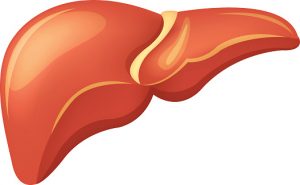
In a recent study researchers acknowledged that the exact rate of NAFLD among those with type-2 diabetes is unknown. Researchers used non-invasive imaging techniques to estimate liver fat and stiffness in 100 diabetics. Prevalence of NAFLD was 65 percent and fibrosis was seen in seven percent of individuals.
Researchers note that NAFLD continues to remain unknown in type-2 diabetes and is often overlooked by primary care settings. Senior author, Rohit Loomba, said, “Screening asymptomatic diabetics could help prevent advanced liver damage and reduce liver-related complications and deaths.”
There are many common risk factors for diabetes and nonalcoholic fatty liver disease, including obesity (being overweight), high cholesterol and high blood pressure. These factors can contribute to nonalcoholic fatty disease as well as type-2 diabetes, which is a possible reason as to why NAFLD cases are often seen in those with type-2 diabetes. Even if a person doesn’t have diabetes at first, NAFLD can contribute to its onset and vice versa.
The same lifestyle changes which can help you better manage your diabetes can go a long way in helping your liver and preventing nonalcoholic fatty liver disease. These include:
- Losing weight
- Exercising
- Managing blood sugar, cholesterol and blood pressure
- Minimizing alcohol consumption – or eliminating it completely
- Eating a balanced, healthy diet
Diabetics need to become more aware of the possible threat to their livers that diabetes places on them, and they also need to ask their doctors for screenings to ensure their livers maintain proper health. Nonalcoholic fatty liver disease can be symptomless, so it can continue for years, without being found, until it progresses to cirrhosis.
The latest findings were published in the Alimentary Pharmacology and Therapeutics.
Also read: Sedentary behavior contributes to non-alcoholic fatty liver disease
Sources:
http://www.mayoclinic.org/diseases-conditions/diabetes/expert-answers/diabetes/faq